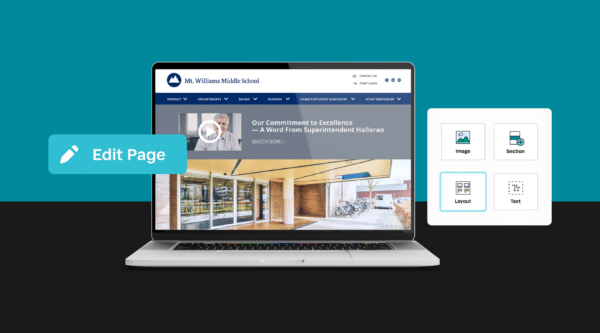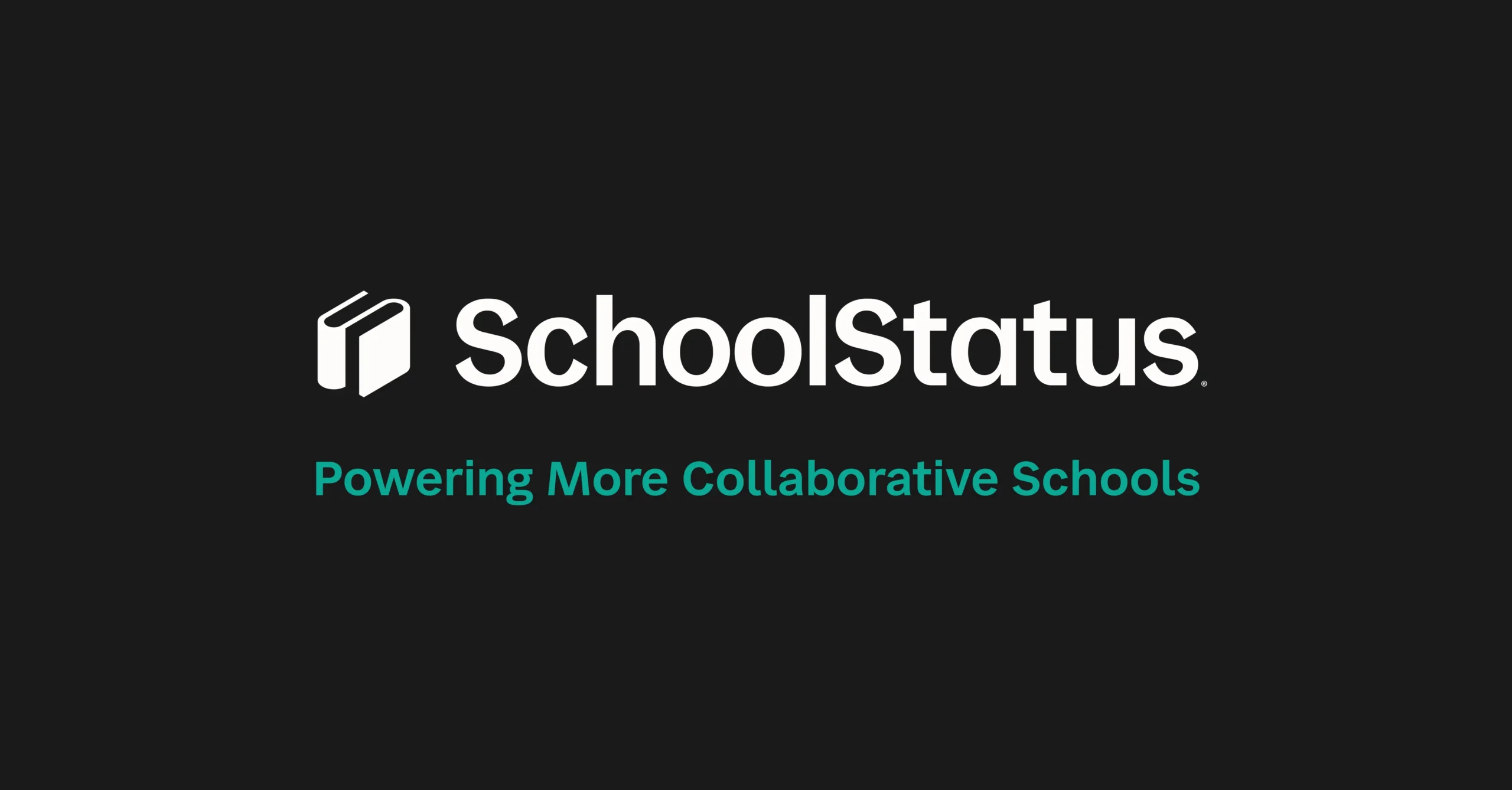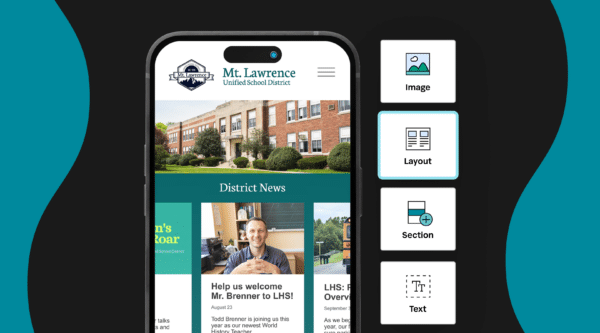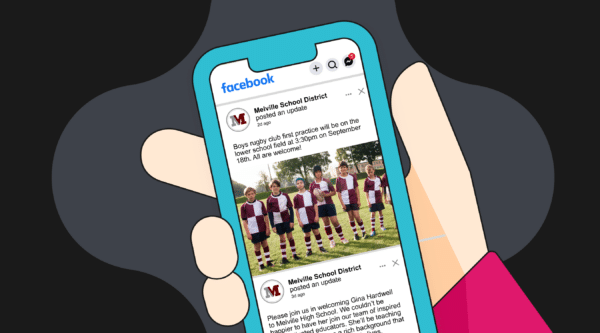

One of the most common complaints from school communicators is that their website just sits there, static. Sure, the events and calendar pages get traffic, but how do you make your website more interactive and boost engagement with families? How can your website help meet your school communications and academic goals?
Two words: Landing Pages.
Landing pages are dedicated web pages designed to capture visitor information through targeted messaging and forms. Used widely in the commercial world for email sign-ups, webinar registrations, or demo requests, they are a powerful tool to pull visitors closer to your school community. When integrated into your school’s communication strategy, landing pages can help promote events, build enrollment, gather data, and more.
Your Website is More Than a Directory
School websites have traditionally been used as a place to list basic information—staff directories, event calendars, athletics schedules, and lunch menus. While this core content remains essential, school communicators need to evolve their websites into dynamic, interactive platforms. Even the most perfectly designed site with excellent navigation can benefit from the focused messaging and action-driven content that landing pages provide.
For more tips on optimizing school communication, read our blog on School Website Design Best Practices.
Why Landing Pages Matter
Landing pages prompt your website visitors to take action—whether it’s registering for an event, RSVPing for a school function, or purchasing tickets to a school play. By directing them to a clear, purpose-driven form, you create opportunities to engage with parents, students, and staff in a meaningful way.
Whether you’re encouraging a prospective parent to request more information, having an existing parent sign up for a parent-teacher conference, or asking a student to register for a field trip, landing pages are designed to meet communication objectives by turning visits into actions.
The Anatomy of a School Website Landing Page
A well-designed landing page follows some key best practices. But before we dive into that, it’s important to understand how visitors arrive on a landing page. Their journey could start from various sources—social media posts, email campaigns, blog articles, or another page on your website. Each of these sources should be paired with a clear call-to-action (CTA) that directs them to the landing page.
Here’s what every school landing page should include:
1. Headline
Your headline needs to grab attention quickly and summarize the page’s purpose. Be concise and direct, ensuring visitors know what they’ll get if they take action.
2. Brief Copy
The body of your landing page should be short and to the point. Your visitors are already interested—they’ve clicked through to this page—so keep the copy focused on explaining what they’ll gain by completing the form.
3. Relevant Image
Including an image that reinforces the content helps increase engagement. This could be a picture of the event, a cover image for a study guide, or a visual of a teacher leading an activity. People respond better to visuals, and they make the page more appealing.
4. Form
The form is where conversions happen. Keep it simple—ask only for the information you truly need (such as name and email). Many forms fail because they ask for too much. You’ll have future opportunities to collect more data through follow-up communications.
Why Google Analytics is Essential
Before diving into landing page creation, you need a solid understanding of how visitors currently use your website. Tools like Google Analytics are invaluable for gaining insights into user behavior. You can track where visitors come from, how they navigate your site, and what actions they take. This data is essential for refining your landing pages and measuring their success.
For more on this, check out Google’s Guide to Using Analytics for Education Websites.
Google Analytics, part of the free Google Apps for Education suite, enables schools to track everything from mobile usage to the most popular pages on your website. By leveraging this data, you can design landing pages that resonate with your community and align with your school’s communications metrics.
Shift Your Thinking: Landing Pages Are the Future
Incorporating landing pages into your online communications strategy may require a shift in thinking. But think of them as an opportunity to engage your school community using methods most people now prefer—fast, direct, and actionable interactions.
With attention spans shrinking and the majority of users browsing on mobile devices, schools need to adapt to the way people engage with information. Landing pages offer a straightforward solution for making that engagement happen.
Start Small, Think Big
Begin by integrating landing pages into your most time-sensitive campaigns—such as event promotions. Landing pages are perfect for gathering RSVPs, selling tickets, or sharing details about school events. As you see the benefits, you can expand their use to other areas of your school’s communication strategy.
For more guidance on leveraging landing pages, explore this HubSpot Guide to Creating Effective Landing Pages.
If your current website team isn’t familiar with landing pages, consult your school website provider. They should offer tools or support to help you incorporate landing pages into your broader communications plan.
Landing pages are an underused but highly effective tool to increase family engagement and improve how your school communicates. By implementing them strategically, you can transform your website from a static directory into an interactive, goal-driven platform that meets the needs of your entire school community.
Ready to take your website to the next level? Contact SchoolStatus to learn how landing pages can enhance your school communication strategy.
Stay Connected
News, articles, and tips for meeting your district’s goals—delivered to your inbox.





